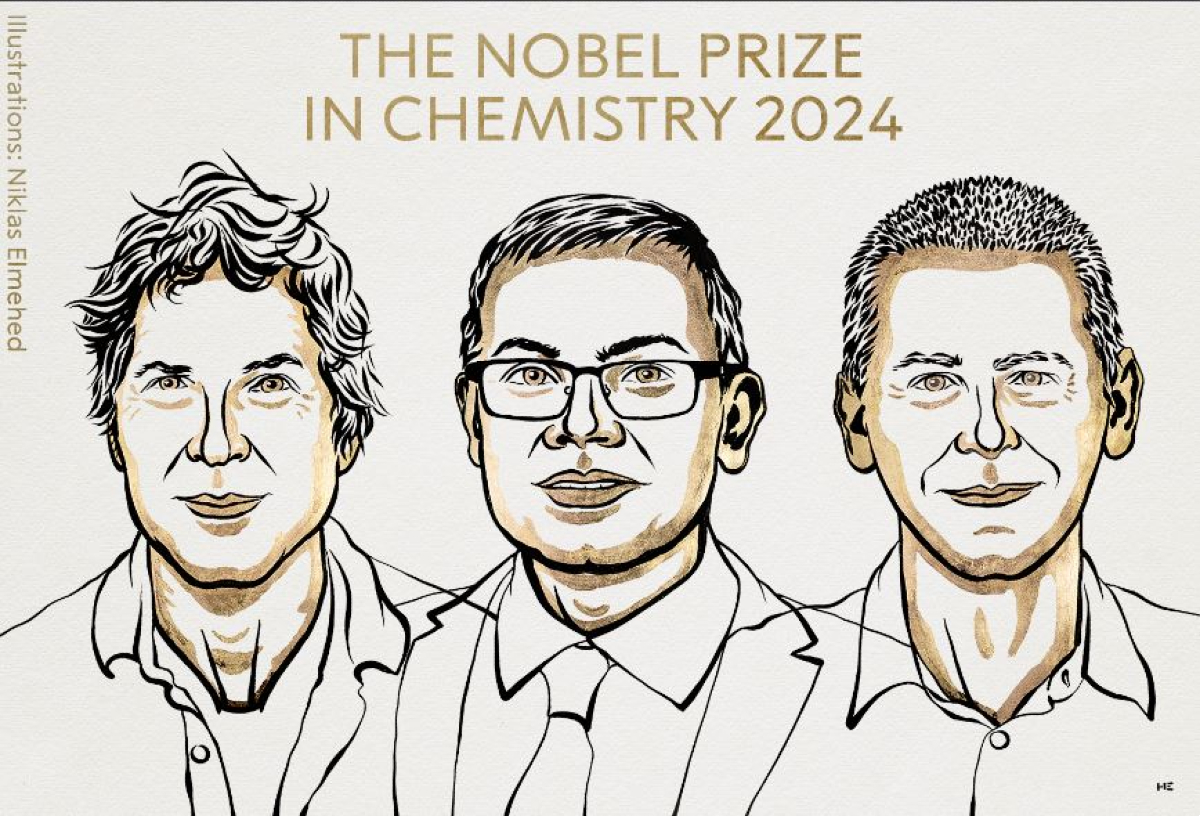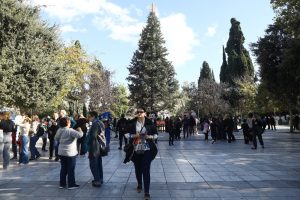The 2024 Nobel Prize in Chemistry goes to scientists David Baker, Demis Hassabis, and John Jumper for their contribution to “computational protein design” and “protein structure prediction”.
The Royal Swedish Academy of Sciences cited the work of US biochemist Baker in computational protein design, and the AI-driven innovations by British-born Greek Cypriot computer scientist Hassabis and US pioneer Jumper in predicting protein structures.
The work, the committee said, contributes to “fully understanding and mastering the chemical tools of life – proteins”.
Based at the University of Washington in Seattle, Baker has managed to build new kinds of proteins with unique shapes and functions, offering wide-reaching applications in health, medicine, and technology.
Hassabis and Jumper, who both work at Google DeepMind in London, cracked a long-standing problem in biology using their AI model AlphaFold2 to predict the structure of proteins, solving a mystery scientists had grappled with for 50 years.
The ground-breaking work paves the way for dozens of applications that will benefit humankind, including the design of new pharmaceuticals, among others.
“I’m really excited about all the ways in which protein design makes the world a better place in health, medicine and, really, outside technology,” 62-year-old Baker said.
The three Nobel laureates will receive a diploma, a medal, and a cash award of $1 million during a special ceremony on Dec. 10, the anniversary of Nobel’s death.
The Nobel Prize in Chemistry was first awarded in 1901. It is awarded by the Royal Swedish Academy of Sciences on proposal of the Nobel Committee for Chemistry. The 2023 Nobel Prize in Chemistry was awarded to Moungi G. Bawendi, Louis E. Brus, and Alexei I. Ekimov for the discovery and development of quantum dots.
The 2024 Nobel Prize in Physics was awarded this week to John J. Hopfield of Princeton University and Geoffrey E. Hinton of the University of Toronto “for foundational discoveries and inventions that enable machine learning with artificial neural networks”.




